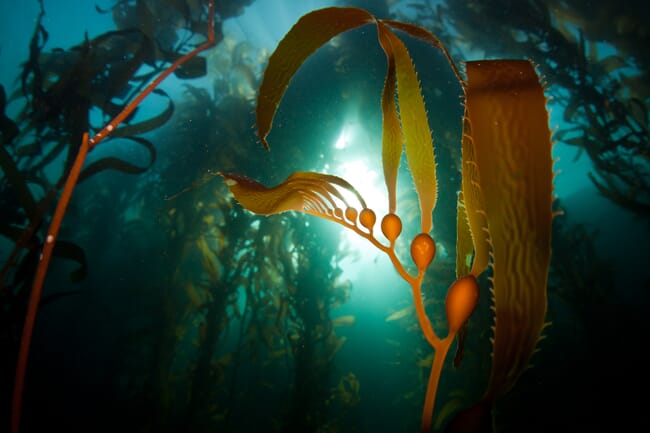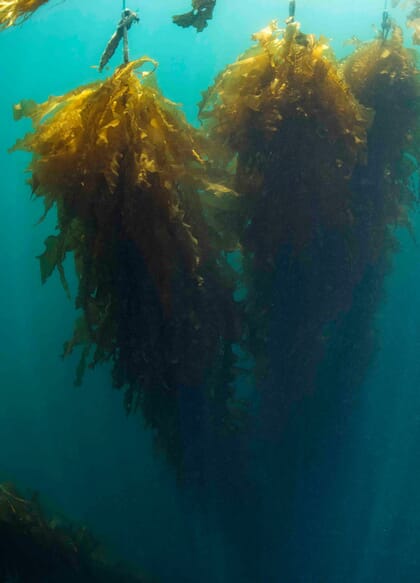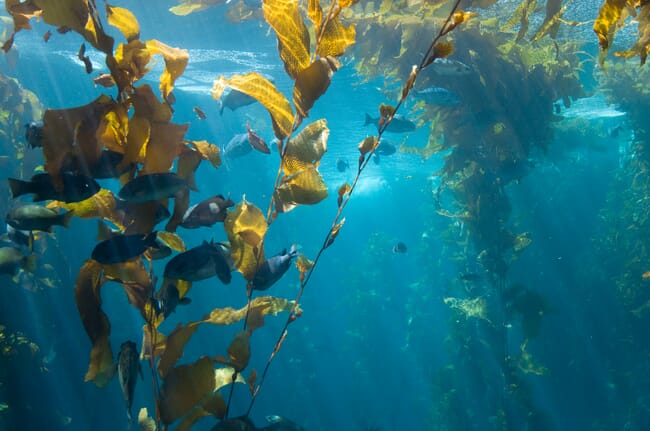
The Sabin Center has published multiple papers exploring the international, US federal and state laws that govern seaweed cultivation © Kelp Blue
The Sabin Center for Climate Change Law at Colombia University recently released a white paper exploring barriers to seaweed permitting for carbon sequestration in California. The publication comes after the school published a paper exploring the international, US federal and state laws that govern seaweed cultivation.
The paper proposed five recommended changes to the lease and permitting process in California. The main push was to lessen or remove, “unnecessary roadblocks to permitting, while still maintaining important environmental and other review of prospective projects.” The recommendations, discussed in more detail in the paper, are to
- Streamline the permit application process
- Develop public interest criteria that balance climate goals and environmental stewardship
- Prioritise state water bottom leases for seaweed farms in designated areas and prepare programme environmental impact reports
- Create a new categorical exemption from CEQA
- Create experimental permits
The seascape for California seaweed

Seaweed stores carbon dioxide in its biomass, with some carbon dioxide also stored in the sediment below where it is grown © Harald Bjorgvin, Ocean Rainforest
Growing interest in using the oceans to enhance removal of carbon dioxide from the atmosphere has in turn spurred more interest in seaweed aquaculture. Seaweed cultivation off the California coast is still in nascent stages, with only two commercial, open-water seaweed farms in state waters at the time of writing, but farmers have expressed growing interest in expanding the practice.
One barrier to expanding seaweed cultivation in California is a complex, costly and time-consuming lease and permitting process. Other states in the US, namely Maine and Alaska, have permitting systems designed to be more supportive of seaweed cultivation.
Permitting for seaweed cultivation in California involves approvals from a considerable number of state and federal agencies, pursuant to state and federal land use and environmental laws. The process can effectively be split into three parts
- Obtaining a state water bottom lease
- Completing an environmental review
- Completing a multi-agency permitting process to allow seaweed ocean farming inside of the lease area.
Due to the multiple steps involved, the permitting process for seaweed farming operations can be costly and may take several years to complete.

California policymakers may be able to draw lessons from less costly and quicker permitting systems in Maine and Alaska © Umitron
The white paper authors say that California policymakers may be able to draw lessons from less costly and quicker permitting systems in Maine and Alaska. Alaska offers permittees a joint agency aquatic farming application that can be used to obtain required state approvals, including the site lease, farm operation permit, and special area permit. The consolidated joint agency approach in Alaska is in part responsible for faster processing times than in California. Maine offers seaweed farmers three forms of permits, each with different levels of complexity in the permitting process. These include experimental leases and limited purpose licenses that give farmers flexibility, allowing for experimentation in location and methods.
The Sabin Center white paper is part of a series of white papers exploring the legal issues associated with a number of ocean-based carbon dioxide removal strategies, including ocean alkalinity enhancement and artificial upwelling and downwelling.




